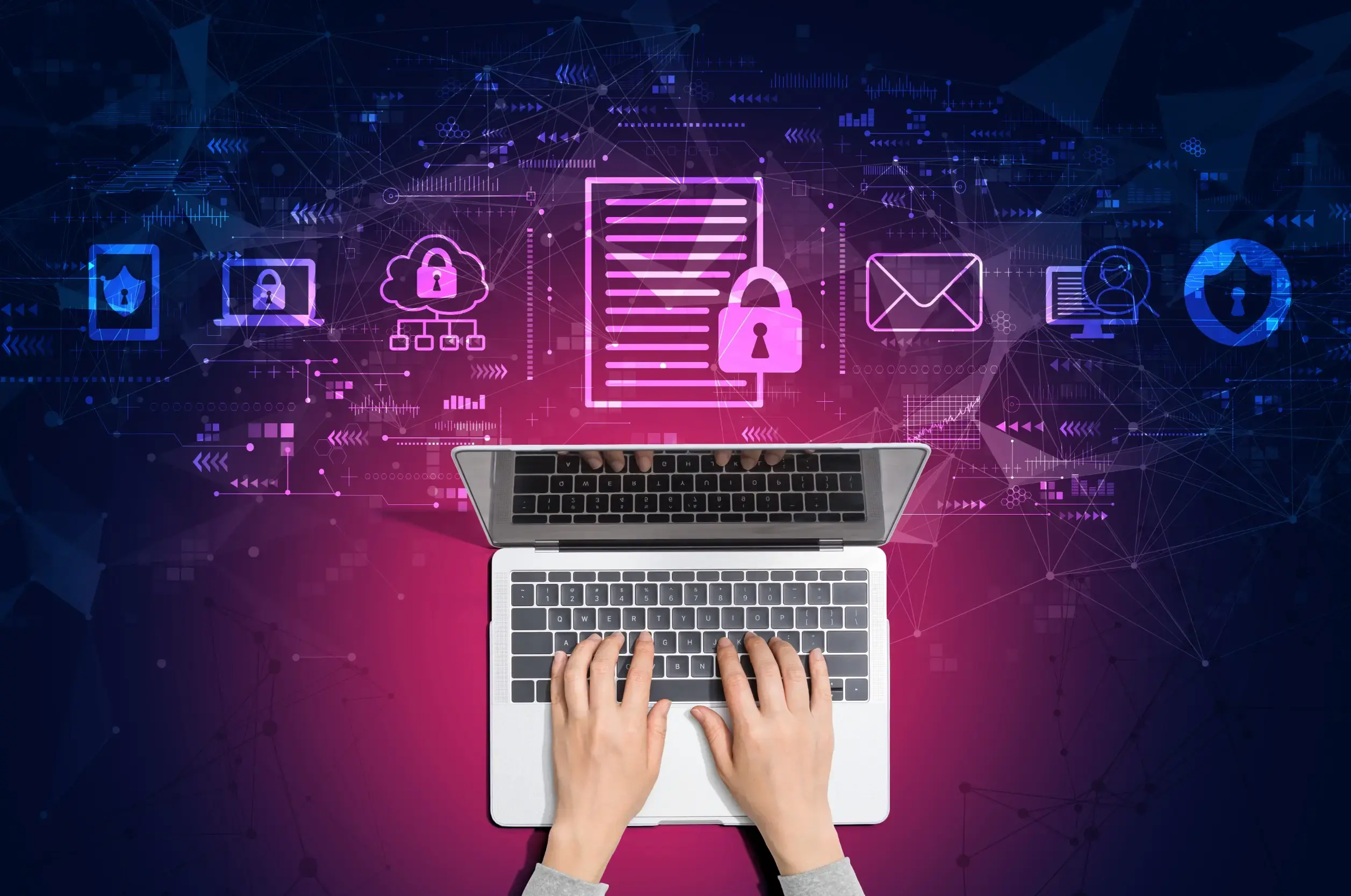Cybersecurity Essentials: Stay Safe from Online Risks & Data Breaches
Date: 14 May 2024

Our vulnerability to cyber dangers grows every year as our lives and businesses become more and more reliant on digital technologies. Personal data, businesses, and infrastructures are consistently at risk. Unfortunately, not everyone is properly equipped to counter these threats.
That's why, we’re going to dive into the cybersecurity essentials that could protect us from online threats and data breaches in 2024.
Understanding Online Threats and Data Breaches
When the terms "online threats" and "data breaches" come to mind, do images of shadowy hackers and Hollywood movie plots fill your mind? While such dramatisation might be riveting, the reality is considerably different. The risk of online threats and data breaches looms everywhere and is certainly not confined to the world of fiction. The most prominent threats to personal data include:
- Malware: This category includes harmful software such as viruses, worms, and Trojans that infiltrate your digital systems, often causing significant harm.
- Phishing: Here, cybercriminals use deception, typically through seemingly innocent emails or messages, to trick you into divulging sensitive information. They pretend to be legitimate entities — your bank, favorite online store, or even colleagues.
This type of sensitive information is frequently used in data breaches, where unauthorised individuals gain access to and exploit your valuable data. A case in point is the infamous Yahoo data breach. Here, almost 3 billion user accounts were compromised, affecting businesses and ordinary individuals.
We must grasp the true nature and extent of these threats. This will enable us to better defend our digital territories, which might be smaller than Yahoo's but are no less important.
Implementing Cybersecurity Measures
Understanding why you need resistance against cyber threats is one thing, but knowing how to implement such resistance is key. On this path, cybersecurity measures become your critical allies.
- One of your key strategic defences should be to implement continuous monitoring technology, such as the Cosmos attack surface management services. This approach involves a thorough scan of all your digital assets to identify and evaluate potential vulnerabilities that cyber attackers could exploit. Encourage yourself, and if applicable, your team, to regularly review and manage these vulnerabilities. Everyone must understand the importance of this dynamic approach to security, which goes beyond static defenses to provide real-time insights into your cybersecurity posture.
- One of your first lines of defence is adopting a robust password policy. Encourage yourself, and if applicable, your employees, not to reuse passwords across different sites. Mandate multi-factor authentication whenever possible, adding an extra security layer beyond a mere password. It’s also essential that everyone understands why easy-to-guess passwords that include their child’s name or their spouse’s date of birth is a strict no-no.
- Being vigilant about software updates is also vital. While those update reminders may seem bothersome, they exist to patch vulnerabilities in your system and close doors to potential attacks. Don't neglect installing and maintaining reliable antivirus programmes. Although these defences aren't foolproof, they provide valuable protection.
- Moreover, don't forget the golden rule of data management: Back it up! Regular data backups could prove invaluable when ransomware strikes or a system fails.
In addition, legal measures can protect you against cyber threats. Utilising secure legal document templates or seeking professional legal help can also be part of your cybersecurity strategy. For this purpose, consider platforms like Lawrina — lawrina.org — which offer more than 200 legal document templates that cater to various needs. Moreover, if you need to find a lawyer, Lawrina's directory of competent professionals can be valuable.
Promoting a Culture of Cybersecurity
Creating a healthy cybersecurity culture requires a comprehensive and unified approach. It calls for integrating cybersecurity principles at every level and facet of an organisation or household. The perception of cybersecurity as an isolated function needs to be revamped, acknowledging instead that it's a foundational principle permeating every digital interaction.
For instance, organisations can start integrating cybersecurity principles into daily operations by standardising cybersecurity protocols. This encompasses steps like enforcing stringent password protocols, promoting regularly updating software, and discouraging insecure practices, such as clicking on links from unverified sources.
Moreover, similar to safety inductions or industry-specific training, cybersecurity education should be timely and recurring. This isn't limited merely to theoretical learning. You can conduct practical sessions that enable individuals to understand the real-life implications of neglecting cybersecurity, such as mock phishing exercises or hands-on work with privacy settings.
Investing in Cybersecurity Incident Response training can help staff members understand their roles and responsibilities in case a cybersecurity incident does occur. Demonstrating the practical application of cybersecurity measures also ensures the information is relevant and usable, not abstract and ignored.
Action in the Event of a Cybersecurity Incident
Cybersecurity planning involves defensive measures to prevent incidents and steps to respond effectively when incidents occur. One essential element of any cybersecurity strategy is a cyber incident response plan. This plan outlines the actions to be taken during a breach, providing a practical guide that can be followed even in stressful situations.
Key elements of an incident response plan typically include the following steps:
- Incident Identification: Early detection is crucial. Look for signs of an incident, such as system slowdowns, unusual network traffic, or unauthorised user access.
- Incident Classification: Once an incident is identified, classify it according to its severity and impact. This can help prioritise responses when handling multiple incidents.
- Isolation of Affected Systems: When a breach is detected, isolate the affected systems to prevent the threat from spreading to other areas.
- Threat Eradication: Aim to eradicate the threat from your system. This can involve activities such as deleting malicious files, closing network connections, or deactivating compromised user accounts.
- System Recovery: After the threat is eradicated, start system recovery efforts. This might involve restoring systems from backups, testing system functionality, and gradually bringing systems back into operation.
- Notify Affected Stakeholders: Notify all parties impacted by the incident. This could range from internal staff to customers and may involve providing updates about the situation and advice on protective measures stakeholders can take.
- Post-Incident Analysis: Perform a detailed investigation following the occurrence to determine what went wrong and how to stop it from happening again.
Remember, having a clear plan in place can serve as a valuable roadmap in times of crisis and can greatly mitigate the chaos and potential damage of cybersecurity incidents. Practicality is key when dealing with these scenarios; preparation will provide the practical approach needed.
Conclusion
As we increasingly depend on our digital extensions, cybersecurity becomes less of a luxury and more of an essential skill. By understanding threats, implementing protective measures, fostering a supportive cybersecurity culture, and planning for possible incidents, we can better guard ourselves against online threats and data breaches.
But the work doesn't end here. The realm of cybersecurity is a dynamic one. Keep on learning, stay informed, and adjust your measures as necessary. Factoring in the cybersecurity essentials highlighted in this article could be your first successful step toward a safer digital future.






